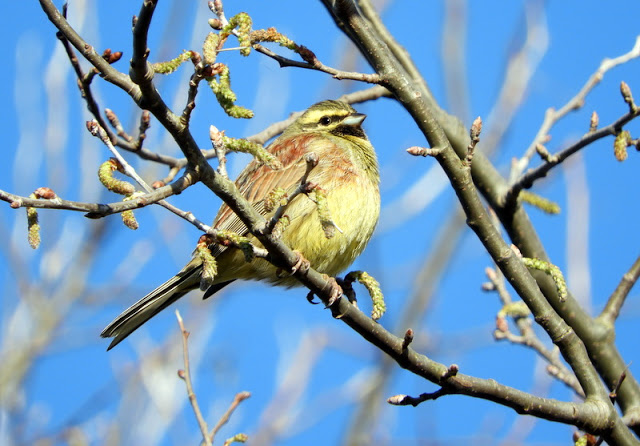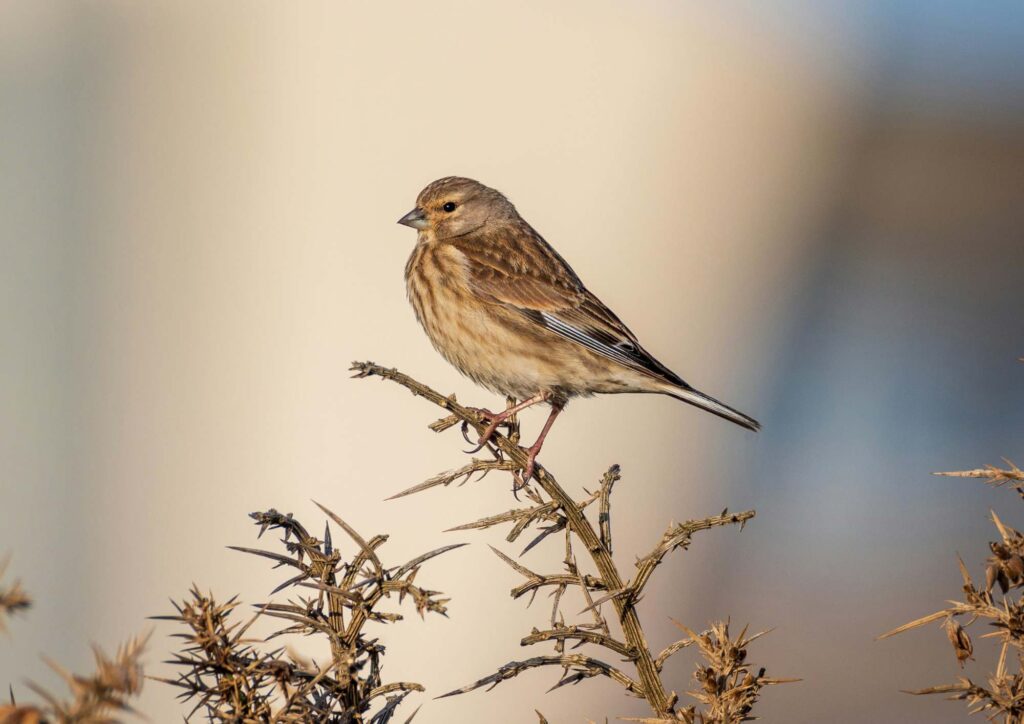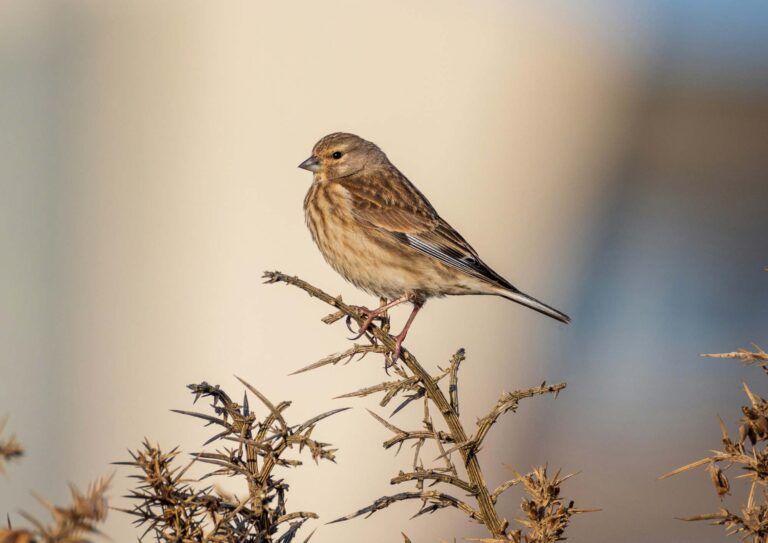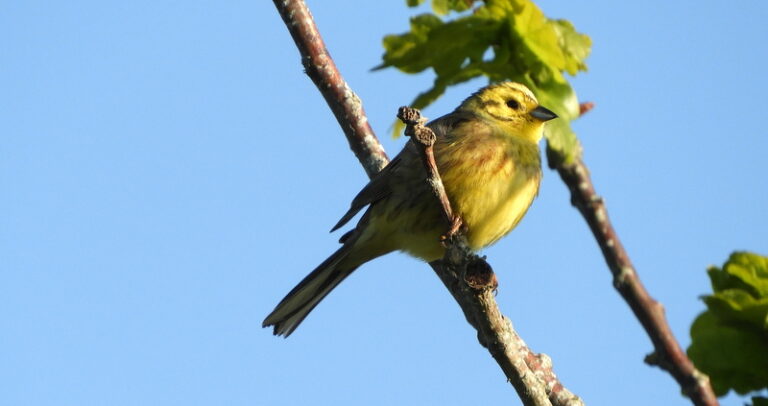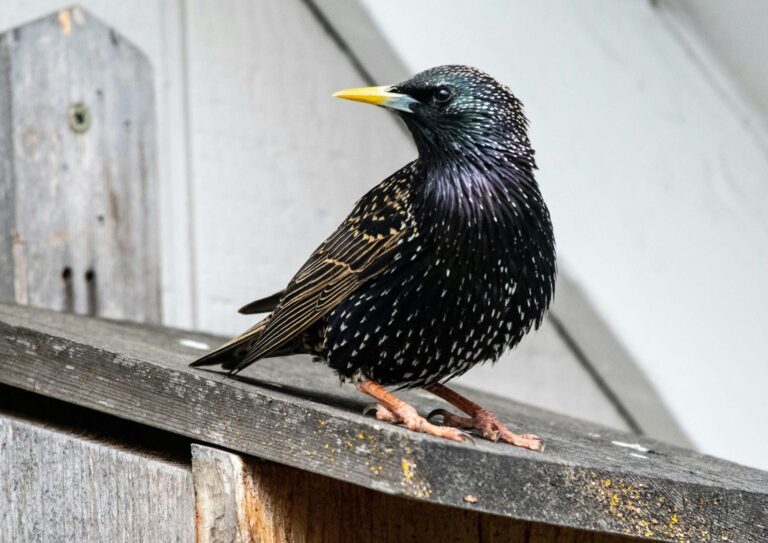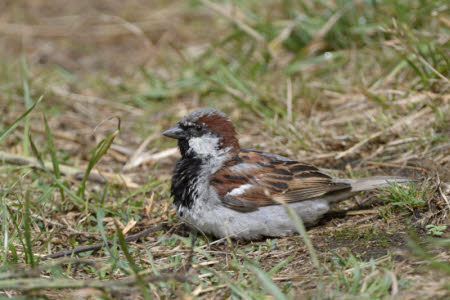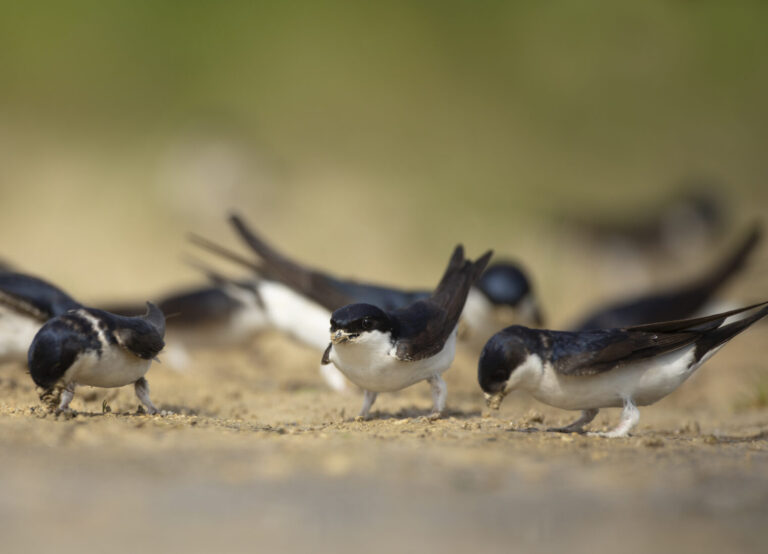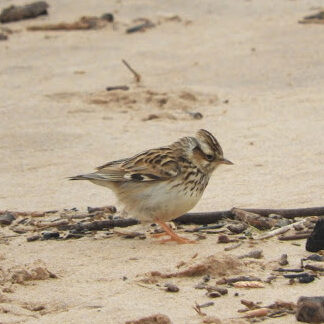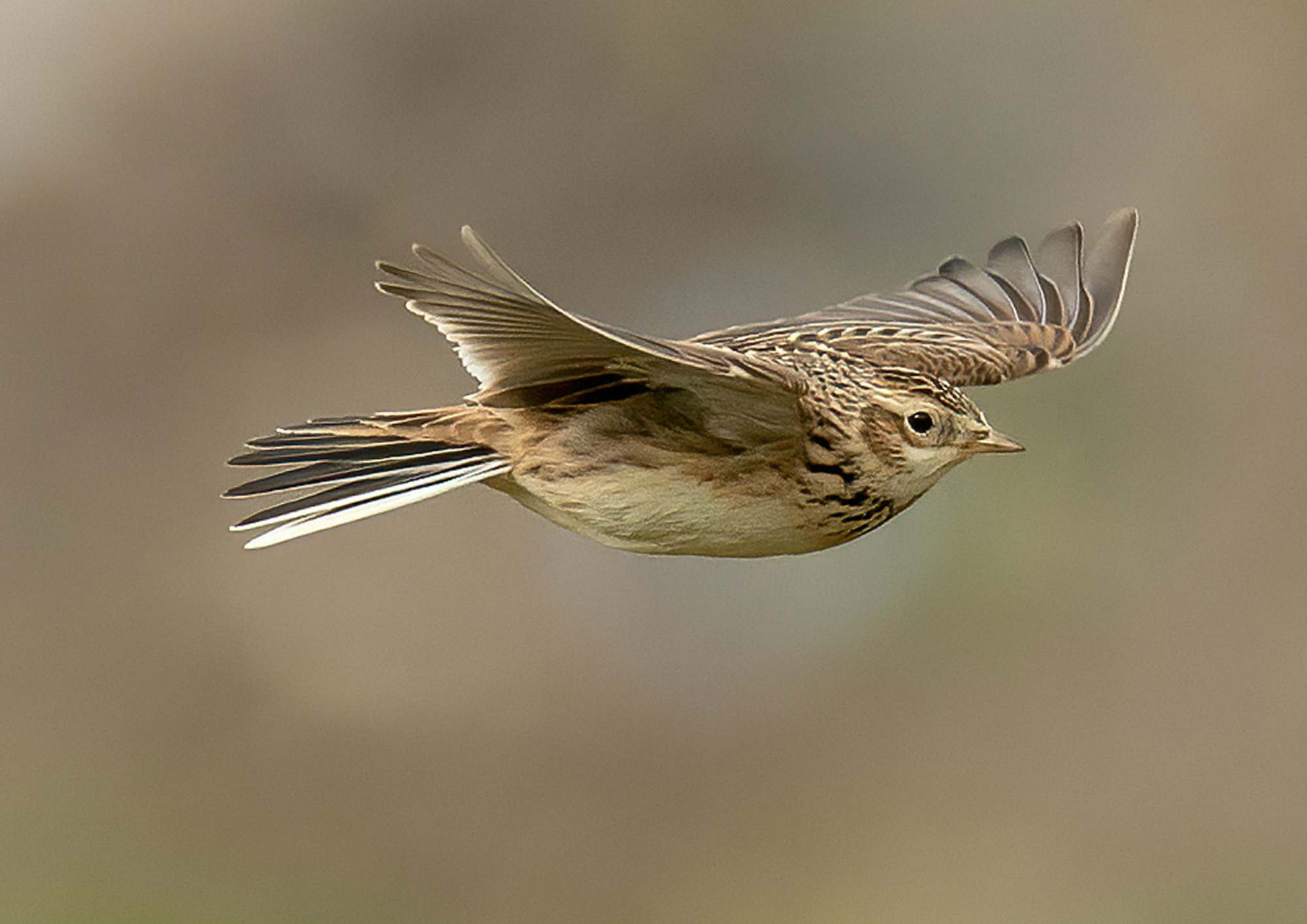This group of birds has adapted to living in our agricultural areas with a landscape of arable, pastures and meadows, hedges, field margins and farm buildings.
These species need a mosaic of habitatsThe natural environment in which an animal, plant or other o... More that provide nesting sites and, as most don’t migrate, food throughout the year. A network of habitats rich in insects, small invertebrates and seed, such as weedy stubbles, grasslands and field and hedge margins are critical. Species such as skylark and woodlark nest on the ground in crops or grasslands. Cirl buntings, linnets, yellowhammers and house sparrows nest in dense hedges or scrubLand with thick vegetation that includes wildflowers, grasse... More. House martins only nest in buildings.
Nationally farmland birds have declined by 61% since 1970. The most severe declines occurred between the mid-1970s and the early 1990s due to rapid changes in farmland management. However populations are still declining. See Find out more for information on the UK farmland bird index.
There are nine Focus Species in this group that need specific actions and attention. All are easy to identify and monitor and so are great flagships for a healthy natural environment. Devon has a national responsibility for cirl buntings, which are listed as a Devon Special SpeciesLorem ipsum dolor sit amet consectetur adipiscing.. Other rare species such as corn bunting, grey partridge, turtle dove and tree sparrow are now absent from, or rarely found in, the county. This is because these species rely on seeds in arable fields and 90% of Devon’s farmland is pastoral.
Actions for this group will benefit all farmland species including barn owl, mistle thrush, whitethroat and swallow, some of which are listed as Devon Species of Conservation Concern. House sparrows, house martins and starlings are also discussed in the Birds of towns and villages group. Linnets, skylarks, yellowhammers and kestrels are also discussed in the Birds of grazed moors, heaths and rough grasslands group.
Lapwings which were once a widespread breeding bird in Devon’s farmed landscape now only breed at Exminster Marshes, see Estuarine birds group.

